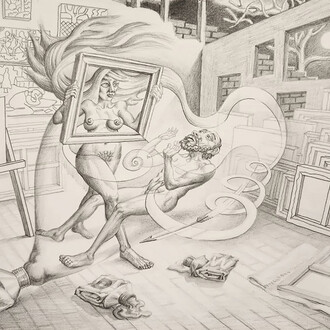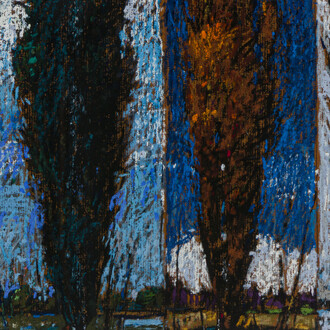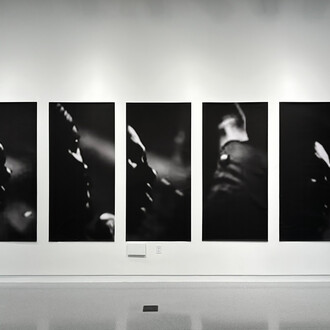The iconic dance performance Rosas danst Rosas, choreographed by Anne Teresa De Keersmaeker, is widely considered one of the classic works of contemporary dance. Set to a rhythmic score and performed by a quartet of female dancers, Rosas danst Rosas finds inspiration in familiar, everyday movements that develop into a series of telling narratives about coming of age, identity, and womanhood. De Keersmaeker's dance company, Rosas, debuted this performance in 1983. Three decades after it was first performed, this minimalist work continues to impact and inspire contemporary choreography. The performance occurs on October 9-12 in the Edlis Neeson Theater at MCA Stage.
In Rosas danst Rosas, the dancers perform repetitive movements that are grounded in recognizable gestures, such as fingers running through their hair or crossing their legs on a chair. These familiar motions give way to an individualized and abstract style of dance, invoking a young woman coming into maturity. The dancers' demanding performance of relentless, sharp, and occasionally mechanistic movements is especially apparent in quiet moments that highlight their exhaustion from dancing. Coupled with Thierry De Mey's percussive score, the piece elicits powerful themes of gender, identity, and society. The dancers appearing in the performance are Cynthia Loemij, Linda Blomqvist, Sandra Ortega Bejarano, Tale Dolven, and Sue-Yeon Youn.
Rosas danst Rosas has profoundly influenced dancers and choreographers. The piece generated renewed public interest in 2011, when superstar Beyoncé's music video Countdown borrowed from the section of Rosas danst Rosas in which the dancers perform seated on chairs. A social media project launched by the company called Re: Rosas! invites the public to learn the chair choreography and share their own videos of the dance, a project in which the MCA participates using #MCAStage.
Belgian choreographer Anne Teresa De Keersmaeker created Rosas danst Rosas at the age of twenty-four, challenging Europe's then narrow definition of dance. She choreographed Rosas danst Rosas for herself and three other dancers, basing the minimalist work on movements that are repeated, elaborated, and closely tied to the music. Its 1983 premiere established De Keersmaeker's company, Rosas, which has become one of the world's leading contemporary dance companies. The company made their Chicago debut on MCA Stage 15 years ago with the work Drumming.
De Keersmaeker continues to revolutionize the field of dance through her support of arts, culture, and education. In 1995, she founded P.A.R.T.S. (Performing Arts Research and Training Studios), one of the most significant training schools in the world for dance, music, and theater. In 2011, she received the prestigious Samuel H. Scripps/American Dance Festival Award for Lifetime Achievement. Her recent work includes close collaborations with artists such as Alain Franco, Ann Veronica Janssens, Michel François, Jérôme Bel, and Björn Schmelzer, showcasing an evolving style and an interest in improvisation. In 2013, she premiered Partita 2, a duet with dancer and choreographer Boris Charmatz, and Vortex Temporum, a partnership with Ictus Ensemble set to the music of Gérard Grisey. She also authored a two-volume book set with performance theorist and musicologist Bojana Cvejinć, A Choreographer's Score: Early Works (2012) and A Choreographer's Score: En Atendant & Cesena (2013), on view in the Edlis Neeson Theater lobby from October 6 through 12. Visitors can page through the books and view DVDs depicting thirty years of dance through interviews, drawings, photos, documentary footage, and other media.
All images: Rosas danst Rosas. Photo: Herman Soregeloos.
















